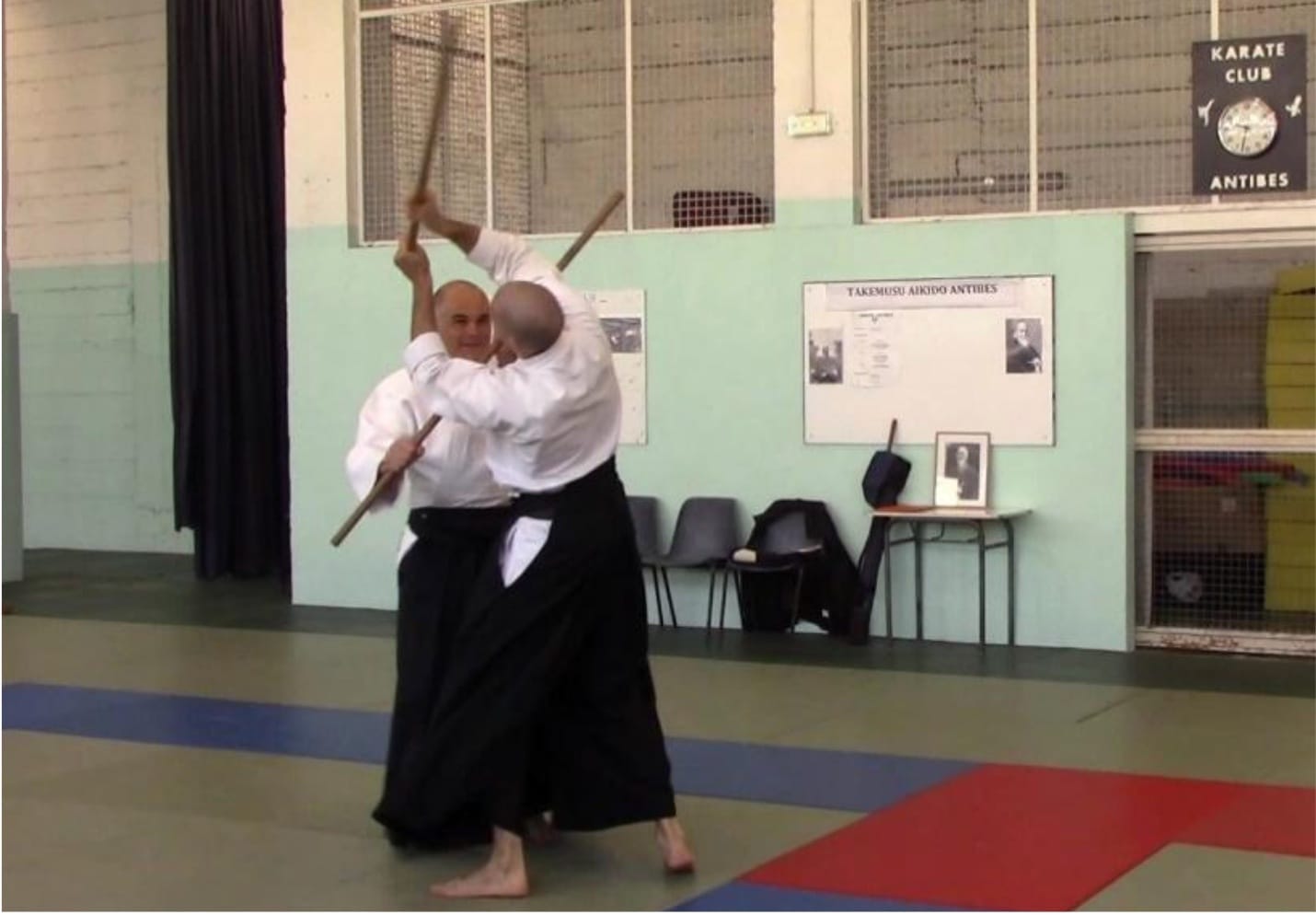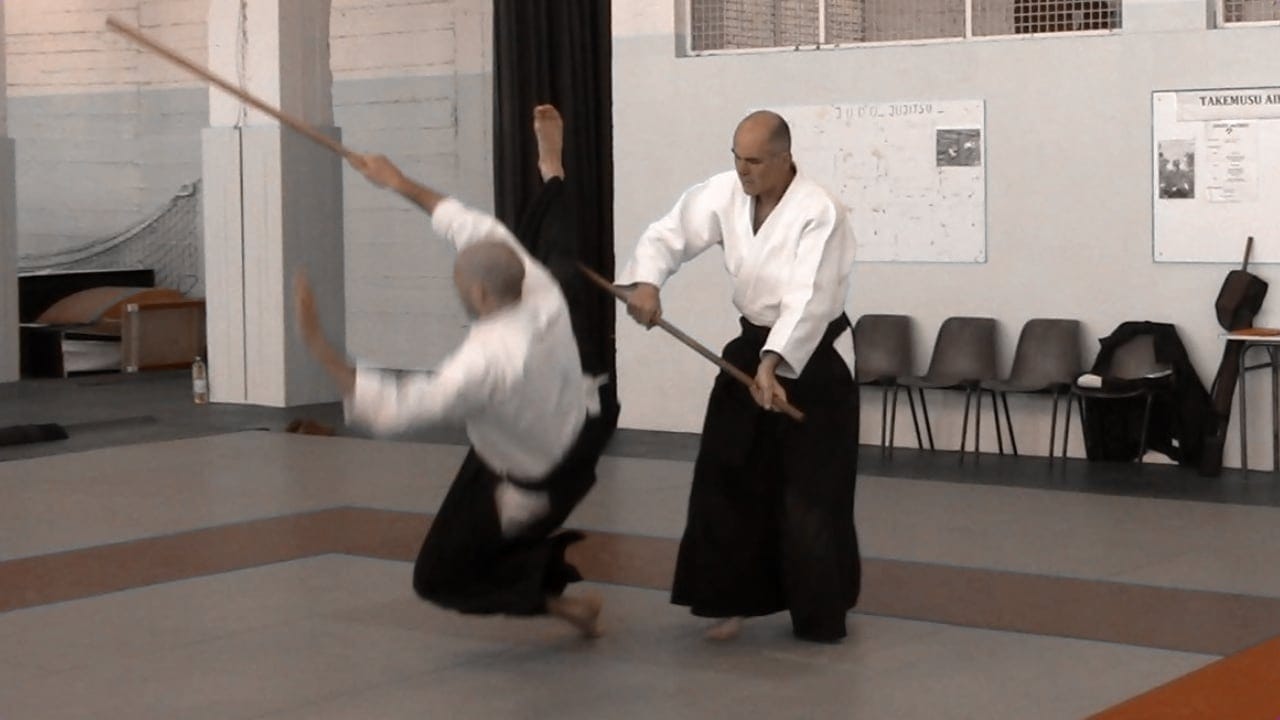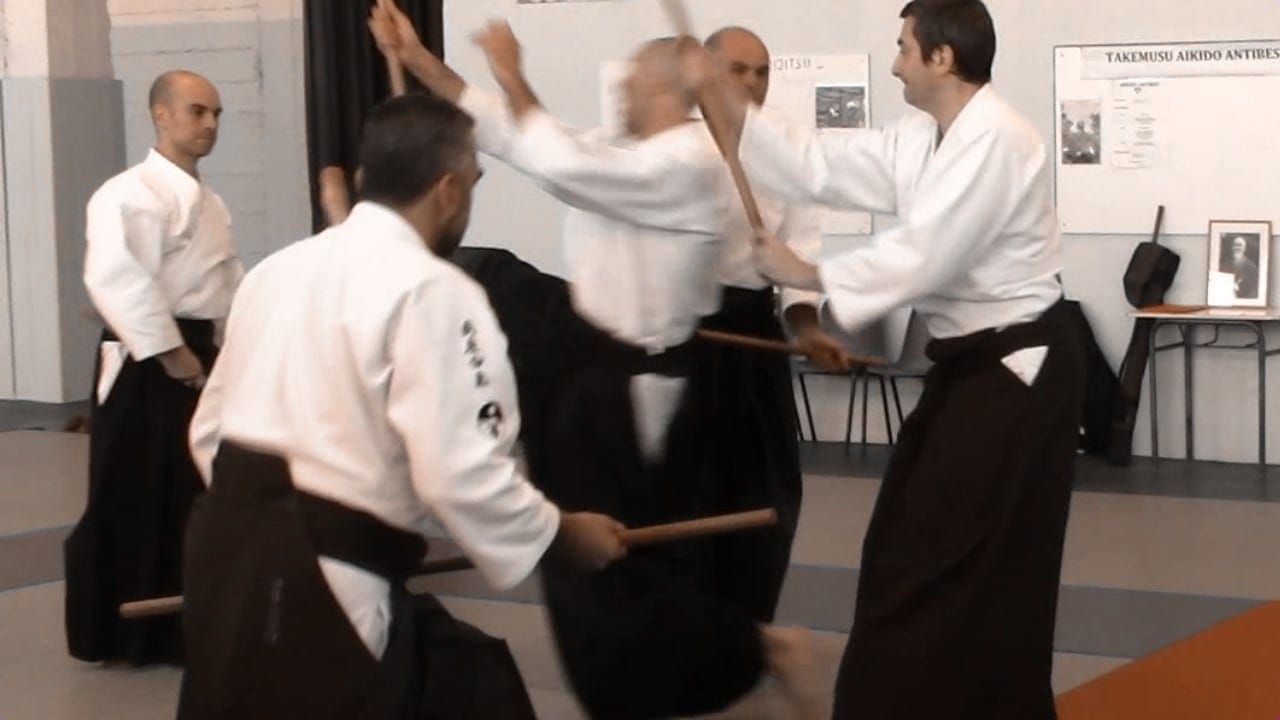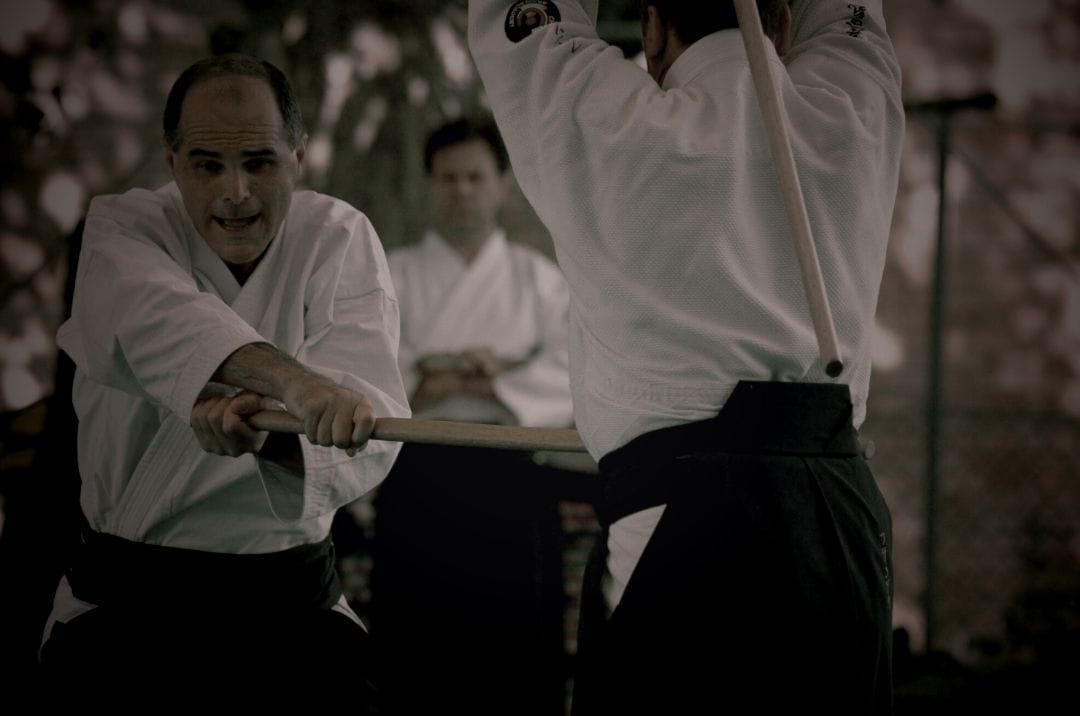For a long time, Saito Sensei taught kumijo n°7 using jodan control (on uke's right elbow) as the basic form. At the time, he presented mowing down uke's right leg as a technical variant of the basic movement.
Later, he reversed this way of teaching. That is to say, he decided to use mowing of the leg as the basic form, and to present elbow control as a variation :

The question is, why did he reverse the order of the two techniques in his teaching? We'll try to understand this in the following technical dossier.
Suffice it here to present kumijo n°7 in the linear form established by the method:
In the first step, tori withdraws his front leg (i.e. his left leg), his mind moving backwards. In the second step, this withdrawal disappears, and the mind (the zanchin) moves forward. However, as the method is exercised in a line, you need to "adjust" the distance or choose to take an angle. It's one or the other if you want to avoid uke's tsuki. If you adjust the distance as shown in the video, you still need to tension the body forward. This is because the third beat of kumijo - whether for uke's elbow or leg - requires tori to prepare in the second beat for immediate entry (irimi) the moment after.
As we shall see, all these technical problems are essentially relative; in fact, they are linked solely to the method's pedagogical approach. They disappear completely in the real movement.
There is one difficulty, however, which is as much to be found in the method as in the actual movement: when reaping the leg, the lever exerted by tori's jo must not be straight forward, in the axis of uke's knee, which is strong in the natural direction of the joint. The lever should be applied in an upward diagonal to the right. This has the effect of unbalancing uke by disarticulating his knee, which is weak in this non-anatomical axis and cannot resist.




